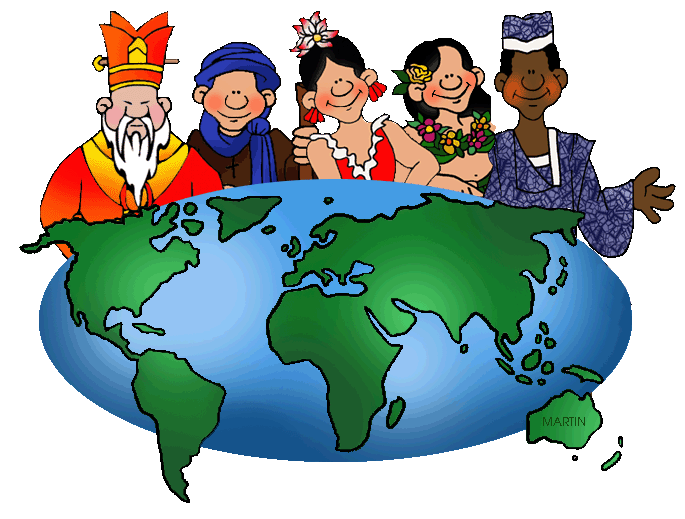Cultural day clip art serves as a vibrant tapestry that encapsulates the essence of diverse traditions and communal celebrations. It transcends mere visual representation, acting as a bridge between individuals and their cultural heritages. As society continues to embrace globalization, the significance of such imagery becomes paramount, offering insights into communal narratives and the intrinsic values they convey.
At its core, cultural day clip art embodies the pluralism that characterizes modern society. It often features symbols, motifs, and themes that represent various cultures—be it traditional attire, ceremonial practices, or iconic landmarks. The fascination with these visual elements lies not only in their aesthetic appeal but also in their ability to invoke a sense of nostalgia, pride, and identity among individuals. This emotional resonance stimulates an appreciation for the rich tapestry that forms the world’s cultural landscape.
Color plays a vital role in cultural day clip art. Different hues elicit specific emotions and carry particular meanings across cultures. For example, vibrant reds may signify celebration and joy in many cultures, while blues might evoke tranquility or sorrow. By understanding these color associations, one can appreciate the subtler messages embedded within the clip art, thus enriching the viewer’s experience. The interplay of color and symbolism becomes especially salient during cultural festivals, where the visual representation serves to highlight the significance of the occasion.
The simplicity of clip art belies its profound implications. At first glance, it may appear as mere decoration; however, it often serves as a crucial educational tool. Within academic and social contexts, cultural day clip art can facilitate discussions about cultural heritage and intercultural dialogue. By using these images in classrooms or community events, educators and activists can foster a sense of awareness and appreciation for the diversity that defines human civilization.
Moreover, the accessibility of digital clip art democratizes cultural expression. In the age of technology, individuals can easily find and adapt clip art for personal or communal use. This democratization allows for a more significant sharing of cultural narratives, enabling individuals to partake in and celebrate traditions that may not directly align with their heritage. It expands the purview of cultural appreciation by encouraging cross-cultural interactions and exchanges, thereby dismantling barriers and fostering unity among various communities.
The popularity of cultural day clip art can also be attributed to its adaptability. From promotional materials for festivals to advertisements for cultural exhibitions, these images can be tailored to suit multiple formats and media. This versatility is essential in an era where visual communication predominates, and the appeal of graphics often surpasses text. Consequently, the capacity to convey complex cultural ideas through simple illustrations enhances the effectiveness of campaigns aimed at promoting cultural events.
In observing the trend of cultural day clip art, one cannot ignore the undercurrents of commercialization. As cultural symbols gain popularity, they may occasionally be appropriated without an understanding or respect for their context. This phenomenon raises critical questions about authenticity and cultural sensitivity. It is imperative for creators and users of cultural day clip art to navigate these waters thoughtfully, ensuring they honor the sources and meanings behind the imagery.
These phenomena mirror broader societal issues, such as cultural appropriation and the commodification of traditions. When clip art becomes detached from its cultural roots and employed purely as decorative elements, the risk exists of diminishing the cultural significance it holds. Thus, responsible engagement with cultural day clip art involves an awareness of the historical and social contexts from which these symbols originate.
Another layer to consider is the role of technology in shaping perceptions of cultural day clip art. With the advent of digital platforms, the ease of access to diverse cultural representations is unprecedented. However, this also means that many representations can emerge from superficial understandings of culture, lacking depth and failing to reflect true cultural practices and beliefs. This disconnect can lead to misunderstandings and reinforce stereotypes, which may further marginalize already underrepresented cultures.
In conclusion, cultural day clip art embodies an intricate interplay between celebration, discovery, and dialogue. As it serves to honor and preserve cultural identities, it is crucial to approach its usage with a balanced perspective. Engaging with cultural day clip art requires an understanding of its implications and responsibilities, urging individuals to celebrate the richness of human experience while remaining cognizant of the deeper meanings these visuals hold. In a world increasingly defined by rapid cultural exchange, the thoughtful utilization of cultural day clip art can promote unity, understanding, and respect among various cultures. Celebrating diversity through such visual mediums not only enriches our cultural narrative but also fosters a deeper appreciation for the multifaceted world we inhabit.
